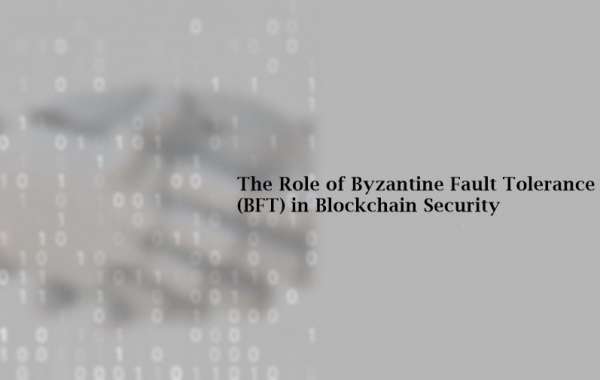Byzantine Fault Tolerance (BFT) is a critical concept in blockchain technology, ensuring that decentralized networks can achieve consensus even in the presence of malicious or faulty nodes. Originating from the Byzantine Generals' Problem, BFT addresses the challenges of maintaining agreement in a distributed system where some participants may act dishonestly or fail unexpectedly.
Understanding Byzantine Fault Tolerance (BFT)
Byzantine Fault Tolerance refers to a system's ability to reach consensus despite the presence of Byzantine faults—conditions where components such as nodes or validators may fail or act maliciously. In the context of blockchain, BFT ensures that the network can continue to operate correctly even if some nodes attempt to disrupt the consensus process.
The Byzantine Generals' Problem: The Byzantine Generals' Problem is a theoretical problem in computer science and distributed computing. It describes a scenario where several generals, each commanding a portion of an army, must agree on a common battle plan. However, some generals may be traitors, trying to prevent the loyal generals from reaching a consensus. The challenge is to find a reliable communication protocol that allows the loyal generals to reach an agreement despite the presence of traitors.
In blockchain, nodes play the role of generals, and the consensus mechanism must ensure that honest nodes can agree on the state of the blockchain even if some nodes are compromised.
Importance of BFT in Blockchain Security
Robust Consensus: BFT ensures that the blockchain network can achieve consensus even in the presence of faulty or malicious nodes, enhancing the overall security and reliability of the system.
Fault Tolerance: BFT-based systems can tolerate a certain number of faults (typically up to one-third of the total number of nodes) without compromising the integrity of the network.
Decentralization: BFT mechanisms support decentralization by allowing multiple nodes to participate in the consensus process, reducing the risk of a single point of failure.
Consistency: BFT protocols ensure that all honest nodes have a consistent view of the blockchain, preventing double-spending and other types of fraud.
Resilience: BFT enhances the resilience of blockchain networks against attacks and failures, making them suitable for mission-critical applications.
Implementations of BFT in Blockchain
Practical Byzantine Fault Tolerance (PBFT):
- Overview: PBFT is a widely-used BFT consensus algorithm designed for asynchronous networks. It achieves consensus through a three-phase process: pre-prepare, prepare, and commit.
- Applications: PBFT is used in various permissioned blockchain platforms, such as Hyperledger Fabric and Zilliqa, where performance and fault tolerance are crucial.
Tendermint:
- Overview: Tendermint is a BFT consensus engine that uses a combination of PBFT and PoS. It is designed for high-performance, public, and private blockchains.
- Applications: Tendermint is used as the consensus engine for the Cosmos Network, enabling interoperability between different blockchain networks.
HotStuff:
- Overview: HotStuff is a recent BFT consensus protocol that simplifies the PBFT process and improves scalability. It reduces the communication overhead and optimizes the consensus process.
- Applications: HotStuff has been adopted by Facebook's Diem (formerly Libra) blockchain project, emphasizing its potential for large-scale applications.
Algorand:
- Overview: Algorand combines BFT with a unique PoS mechanism to achieve consensus. It randomly selects a committee of validators to propose and vote on blocks, ensuring both security and decentralization.
- Applications: Algorand is used for various decentralized finance (DeFi) applications, emphasizing fast and secure transactions.
HoneyBadgerBFT:
- Overview: HoneyBadgerBFT is an asynchronous BFT protocol designed for high-latency networks. It achieves consensus without relying on precise timing assumptions, making it resilient to network delays.
- Applications: HoneyBadgerBFT is suitable for blockchain applications in challenging network environments where latency and reliability are critical.
Challenges and Future Directions
While BFT provides robust security and fault tolerance, it also presents several challenges:
Scalability: BFT protocols can become less efficient as the number of nodes increases, potentially limiting their scalability for large public blockchain networks.
Complexity: Implementing BFT requires sophisticated algorithms and protocols, which can add complexity to the blockchain system.
Communication Overhead: BFT protocols often involve significant communication between nodes, which can increase latency and reduce throughput.
Adversarial Conditions: BFT must be resilient to various adversarial conditions, including Sybil attacks and network partitions, requiring ongoing research and innovation.
Future directions for BFT in blockchain include:
Hybrid Consensus Mechanisms: Combining BFT with other consensus algorithms, such as PoS or PoET, to enhance scalability and performance while maintaining security.
Optimized Protocols: Developing optimized BFT protocols that reduce communication overhead and improve scalability without compromising fault tolerance.
AI and Machine Learning: Leveraging AI and machine learning to predict and mitigate faults, enhance node selection, and optimize the consensus process.
Cross-Chain Interoperability: Enabling BFT-based consensus across multiple blockchain networks to support interoperability and collaboration in the broader blockchain ecosystem.
Conclusion
Byzantine Fault Tolerance (BFT) is a cornerstone of blockchain security, ensuring that decentralized networks can achieve robust and reliable consensus even in the presence of malicious or faulty nodes. By addressing the challenges of distributed consensus, BFT enhances the security, fault tolerance, and resilience of blockchain systems, making them suitable for a wide range of applications. As blockchain technology continues to evolve, innovations in BFT protocols and their integration with other consensus mechanisms will play a critical role in shaping the future of secure and scalable decentralized networks.




